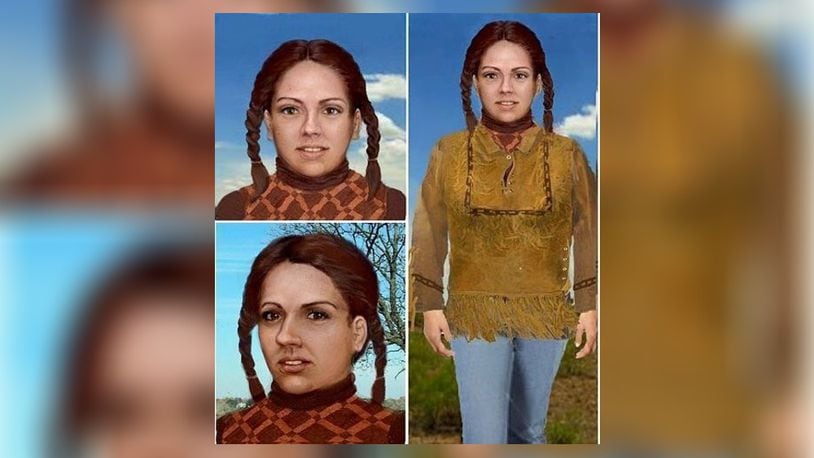Dr. Elizabeth Murray, a forensic anthropologist and professor biology at Mount St. Joseph University in Cincinnati, who has been involved in the Jane Doe investigation several years, and Dr. Colleen Fitzpatrick and Dr. Margaret Press of the DNA Doe Project of California all attended Wednesday’s announcement and talked about their efforts.
“The final lead that cracked this case was some groundbreaking DNA technology. This is through the DNA Doe Project,” Murray said.
Press and Fitzpatrick developed the process of applying genetic genealogy to the identification of unknown persons.
“We’ve several times done what others said couldn’t be done, but we used a stored 1981 blood sample, still liquid,” Murray said. “A number of individuals told us we would not get DNA out of that blood,” which was not refrigerated for years.
They did, however, and within four hours once they had the DNA information, Murray said. The information was used in a genealogical database to find relatives, and from those relatives the DNA was confirmed through forensic testing, she said.
The Buckskin Girl case was one of the first using the DNA Doe Project process. Press and Fitzpatrick said their approach is like those used by adoptees in searches for birth families who use direct to consumer DNA testing companies to obtain a list of potential relatives.
Press and Fitzpatrick said they don’t use the DTC companies, but collaborate with independent labs and bioinformatics experts to obtain similar data and use third-party DNA databases.
They thanked the Miami County investigators for having confidence in them, their new technique.
“It is amazing to have a success story,” said Fitzpatrick.
More information on the DNA Doe Project is available at dnadoeproject.org.
Miami County Chief Deputy Steve Lord said, “We owe a lot of gratitude to the scientists that got us here today.”
About the Author
